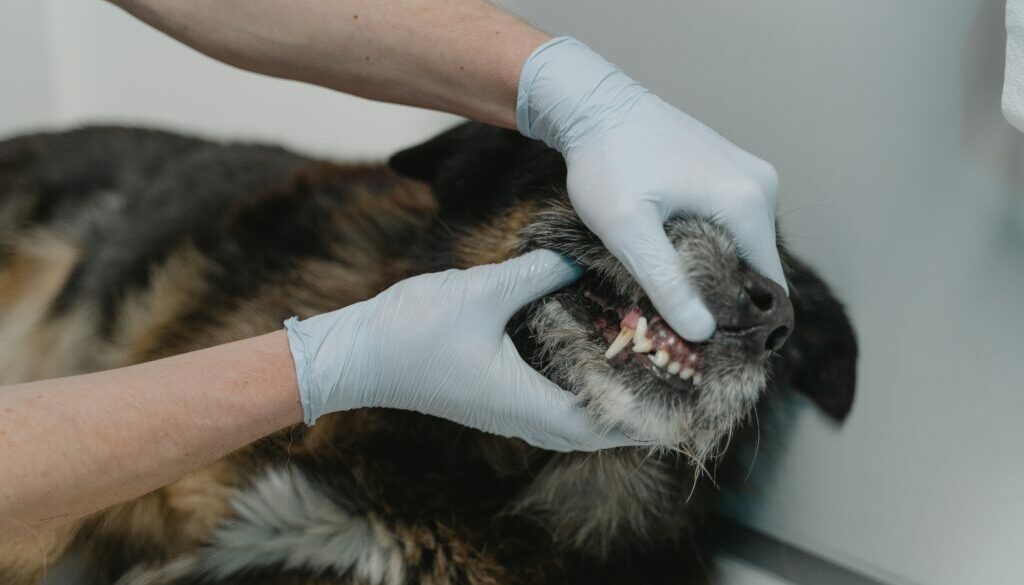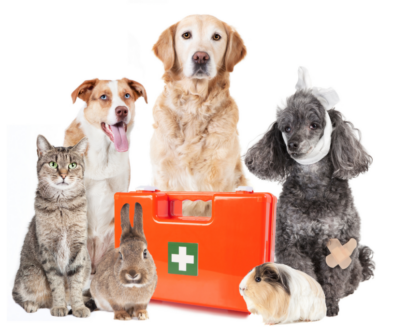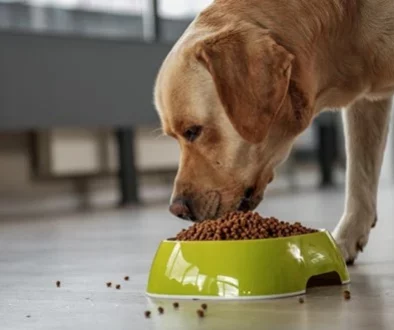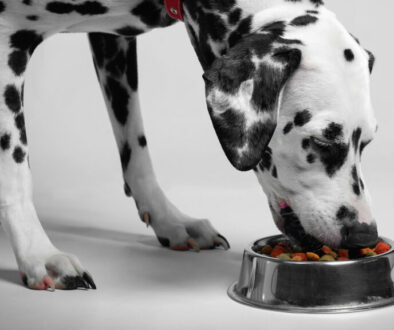Pet Dental Health: An Essential Guide
As responsible pet owners, it’s crucial to prioritize every aspect of our furry friend’s well-being. While regular veterinary care is commonly understood, one area that often goes unnoticed is pet dental health. Similar to humans, pets can experience dental issues that can have a detrimental effect on their overall health.
In this all-encompassing guide, we aim to shed light on the importance of pet dental health and offer valuable tips to ensure that your beloved companion’s teeth remain in exceptional condition. By implementing these practical strategies, you can safeguard their dental hygiene and ultimately enhance their overall quality of life.

Why Is Pet Dental Health Important?
Your pet’s dental health plays a crucial role in their overall well-being. Neglecting their dental hygiene can lead to a variety of issues, such as:
- Periodontal Disease: Dental problems can result in periodontal disease, a serious condition that affects the tissues surrounding the teeth. Left untreated, periodontal disease can lead to pain, tooth loss, and even bone damage.
- Bad Breath: Foul-smelling breath is not only unpleasant for you but also a sign of potential dental problems in your pet. Dental issues often cause halitosis and can be indicative of more severe underlying conditions.
- Organ Damage: Poor dental health can affect more than just your pet’s teeth and gums. Bacteria from dental infections can enter the bloodstream and damage vital organs, such as the heart, liver, and kidneys, causing long-term complications.
Signs of Dental Problems in Pets
It’s essential for pet owners to be aware of the signs that may indicate dental problems in their furry companions. Detecting these issues early can prevent further complications and ensure prompt treatment. Here are some common signs of dental problems to watch out for:
- Bad breath: While pets may not have minty-fresh breath, persistent foul breath is often a sign of dental issues such as gum disease or tooth decay.
- Yellow or brown teeth: Discoloration of the teeth can indicate tartar build-up, which can lead to gum disease and tooth loss if left untreated.
- Difficulty chewing or refusal to eat: Pets in dental distress may exhibit reluctance to eat, chew only on one side of their mouth, or drop food while eating.
- Pawing at the mouth or face: Pets experiencing dental pain may paw at their mouth or face or rub it against furniture or the ground.
- Excessive drooling: Increased drooling, bloody saliva, or visible blood in the water bowl can be signs of oral health issues.
- Swollen or bleeding gums: Inflamed or bleeding gums can be indicators of gum disease or other dental problems.
If you notice any of these signs, it’s crucial to take your pet to the veterinarian as soon as possible for a thorough dental examination and appropriate treatment.
Tips for a Stress-Free Dental Care Routine for Your Pet
Establishing a dental care routine for your pet can be a challenge, but it’s essential for their overall health. Here are some tips to make the process stress-free:
- Gradual introduction: Start by gently touching your pet’s mouth and teeth with your finger or a soft cloth to get them used to the sensation.
- Use pet-friendly toothpaste and a toothbrush: Never use human toothpaste as it contains ingredients that can be toxic to animals. Use a pet toothbrush or a fingerbrush along with pet-friendly toothpaste.
- Patience and positive reinforcement: Be patient and give your pet praise and rewards for their cooperation during brushing sessions. Make it a positive experience for them.
- Opt for dental treats and toys: Offering dental chews and toys specially designed to promote oral health can help reduce plaque and tartar build-up.
- Regular dental check-ups: Schedule regular dental check-ups and professional cleanings with your veterinarian to identify and address any underlying dental issues.
- Monitor their diet: Feed your pet a balanced diet with quality pet food and avoid excessive sugary treats that can contribute to dental problems.
By following these tips, you can establish a stress-free dental care routine and ensure that your pet’s teeth remain healthy and strong throughout their life.
How to Maintain Your Pet’s Dental Health
Regular Brushing:
Just like humans, pets benefit from regular brushing to remove plaque and prevent tartar buildup. Use a soft-bristled toothbrush and pet-friendly toothpaste to gently brush their teeth. Start slowly and ensure your pet is comfortable before gradually increasing the duration of each brushing session. Aim for at least three times a week.
Pro Tip: Choose a flavored toothpaste designed for pets to make the experience more enjoyable for them.
Dental Chews and Toys:
Providing your pet with dental chews and toys can help keep their teeth clean. These products are designed to promote chewing and help remove plaque and tartar. Opt for specially formulated dental treats and toys to ensure they are effective and safe for your pet.
Pro Tip: Avoid very hard chews that may cause tooth fractures. Consult with your veterinarian for recommendations based on your pet’s specific needs.
Regular Dental Check-ups:
Regular visits to the veterinarian are essential for maintaining your pet’s dental health. During these check-ups, the veterinarian will examine your pet’s teeth and gums, identify any existing or potential dental issues, and perform professional cleanings if necessary.
Pro Tip: Aim for regular annual dental check-ups, and consult with your veterinarian if you notice any signs of dental problems, such as red or swollen gums, excessive drooling, or difficulty eating.
FAQ About Pet Dental Health
Q: Can I use human toothpaste for brushing my pet’s teeth?
A: No, human toothpaste contains ingredients that can be harmful if swallowed by pets. Always use specifically formulated toothpaste for pets.
Q: What if my pet refuses to let me brush their teeth?
A: If your pet resists tooth brushing, try offering dental treats or using dental wipes designed for pets to reduce plaque buildup. Consult with your veterinarian for alternative solutions.
Q: How can I prevent my pet from developing bad breath?
A: Regular dental care, including brushing, dental chews, and professional cleanings, can help prevent bad breath in pets. Additionally, ensuring a balanced diet and addressing any underlying health issues can contribute to fresher breath.
Q: Are there any breeds more prone to dental issues?
A: Certain breeds, such as small dog breeds and brachycephalic (flat-faced) breeds, are more susceptible to dental problems due to their anatomy. However, dental hygiene is important for all pets, regardless of breed.
Conclusion
In conclusion, prioritizing your pet’s dental health is a vital part of being a responsible and caring pet owner. Neglecting their dental hygiene can lead to a range of serious issues, including periodontal disease, bad breath, and even organ damage. By implementing regular brushing, providing dental chews and toys, and scheduling routine dental check-ups with your veterinarian, you can take proactive steps to maintain your furry friend’s dental well-being.
Remember, dental care should be a consistent and ongoing commitment. By investing time and effort into your pet’s dental health, you are promoting their overall well-being and potentially saving them from unnecessary pain and discomfort. Fresh breath, strong teeth, and healthy gums are not only crucial for their oral health but also contribute to their overall quality of life.
So, embrace the importance of pet dental health and make it a priority in your pet care routine. Your furry companion will thank you with a bright smile, endless kisses, and a healthier and happier life together. Start today and ensure that your pet’s dental health remains a top priority through
Also Read:
Pet Care Tips for Cats for Beginners
Pet Care Tips for Dogs for Beginners



